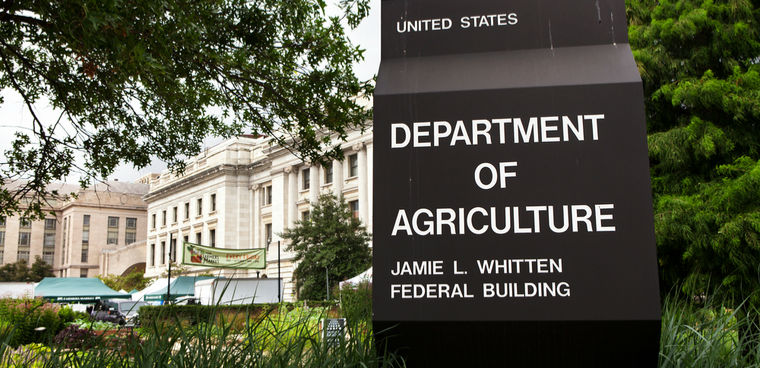USDA finalizes more expansive telework, remote work policies

The new policy reverses telework restrictions put in place during the Trump administration before the outbreak of the COVID-19 pandemic.

Editorial credit: Mark Van Scyoc / Shutterstock.com
The Department of Agriculture is laying down a more expansive telework policy and establishing a remote work regulation, a change after teleworking policies were restricted during the Trump administration.
In a letter to staff from assistant secretary for administration Oscar Gonzales sent last week and shared with FCW by USDA, Gonzales wrote that agency leadership is “committed to building a workplace and workforce that helps USDA truly become the people’s department and a best place to work” and continued to say that “building back your trust in the workplace is one of our top priorities.”
The department’s new policy permits up to eight days of telework in every two-week pay period, according to Gonzales’ email. The specifics will be “based on the duties of the position.”
The new regulation also establishes USDA’s remote work policies, laying down eligibility and procedures for remote work. Within the department, “mission areas, agencies and staff offices” will be able to develop their own remote work agreements,” the email states.
The policy also requires that the department provide a “business-case based written response for denial of telework and remote work requests for all employees” and lays out other guidance for overseas telework and management practices.
USDA also has a newly updated telework and remote work FAQ page on the policies.
These new regulations replace interim ones issued in March 2021 by department secretary Tom Vilsak, which rescinded Trump-era teleworking policies. Those, put in place in 2018, restricted teleworking at USDA to one day of telework a week. That more restrictive policy was superseded by the pivot to maximum telework put in place in March 2020 in response to the fast moving COVID-19 pandemic.
The Biden White House and personnel office have both laid out expanding telework and remote work flexibilities as priorities for the administration and a tool to recruit and retain the workforce.
During the Trump administration, the restrictive telework policies did indeed correlate to a decrease in teleworking at USDA, according to data from the Federal Employee Viewpoint Survey (FEVS).
About one in five Agriculture employees reported teleworking at least one day a week in 2018, with just 4.3% teleworking three or more days a week. In 2017, 8.4% of employees said they teleworked three or more days a week.
Now, the department says that the new program will help with diversity and morale, the second of which has been a pain point in recent years.
In the most recent Best Places to Work rankings, which are based on FEVS data, the department’s overall ranking for employee engagement was 56.5 – second to last among 17 large agencies. That's compared to recent high of 65.9 in 2017.
Morale in certain aspects of the department suffered especially.
The Trump administration moved two USDA components -- the Economic Research Service (ERS) and the National Institute of Food and Agriculture (NIFA) -- from Washington, D.C., to the Kansas City region. ERS ranked 415 out of 420 agency subcomponents in the most recent Best Places to Work rankings. NIFA ranked next to last.
“The policies outlined in this [departmental regulation] are just the beginning of restoring the confidence of our workforce and ensuring USDA attracts a talented and diverse workforce representative of America,” says Gonzales in his email to staff.
The department “will continue to listen to and engage with you, other employees, and union leaders to analyze the results of the Federal Employee Viewpoint Survey (FEVS) and study the findings of the telework survey that was administered earlier this year where 50,048 employees provided their input,” Gonzales wrote.
He also pointed to the use of a survey pilot from the Office of Management and Budget “to guide us on how best to build USDA as one of the federal government’s best places to work.”
Currently, USDA is in the process of returning to physical workspaces, with senior leadership starting to return on Dec. 1, according to a department FAQ sheet revised on Nov. 15.
“Full-fledged return to the workplace” for all employees at the department is starting on Jan. 3. That’s scheduled to end by March 14, 2022.
However, the document also notes that the return depends on “the status of the pandemic,” among other things, a relevant note as the emergence of the new Omicron variant of the coronavirus has caused uncertainty about the status of the pandemic.



